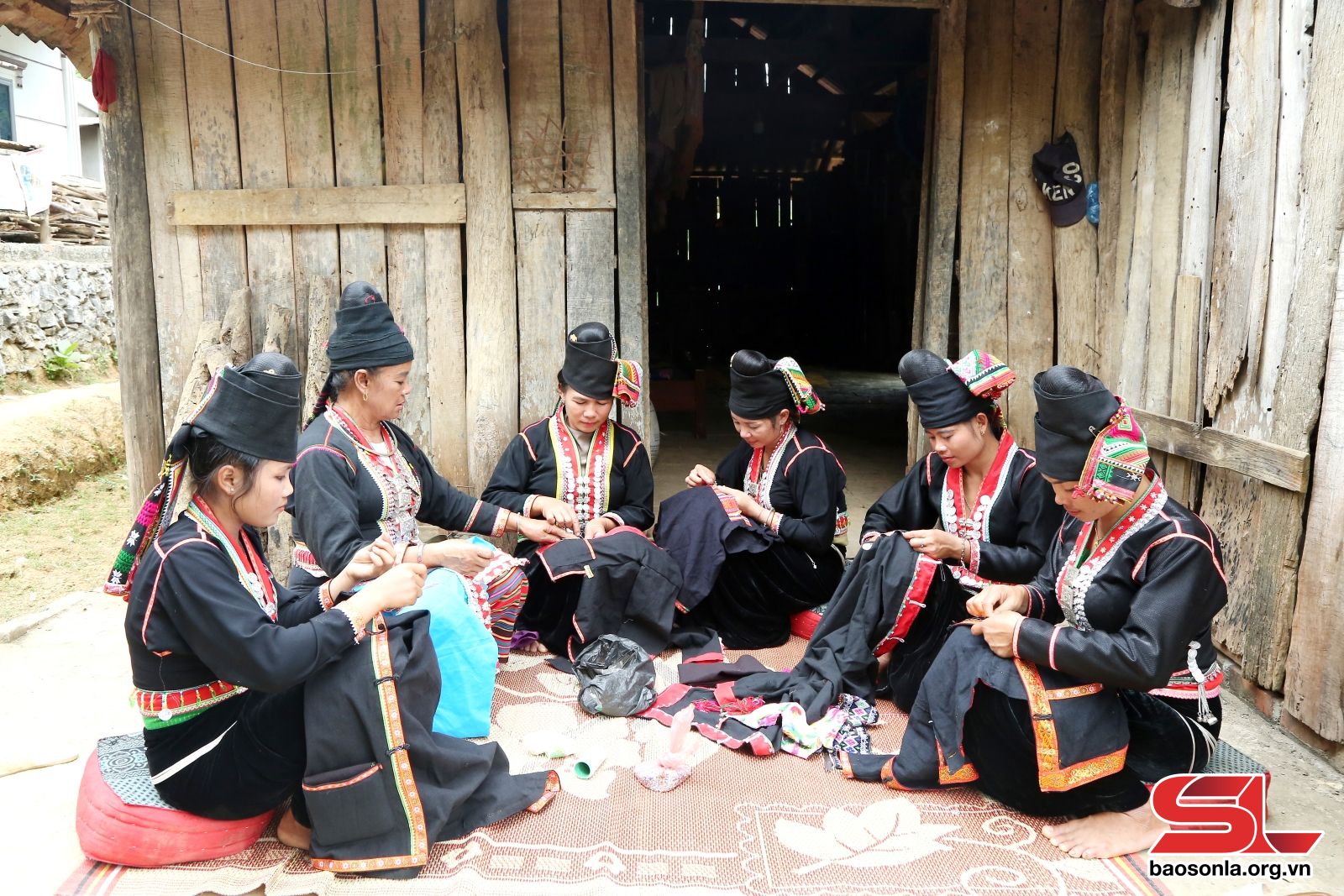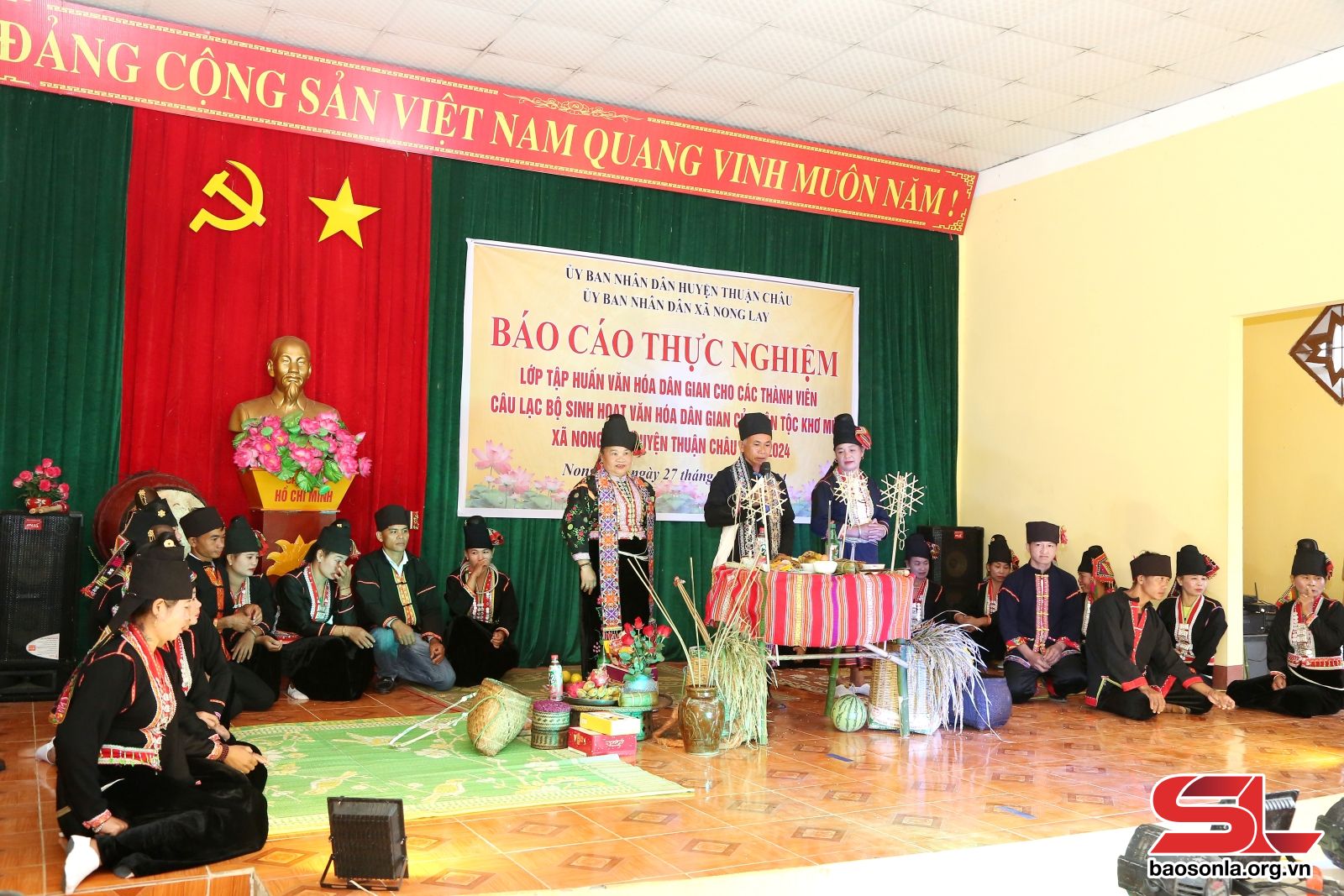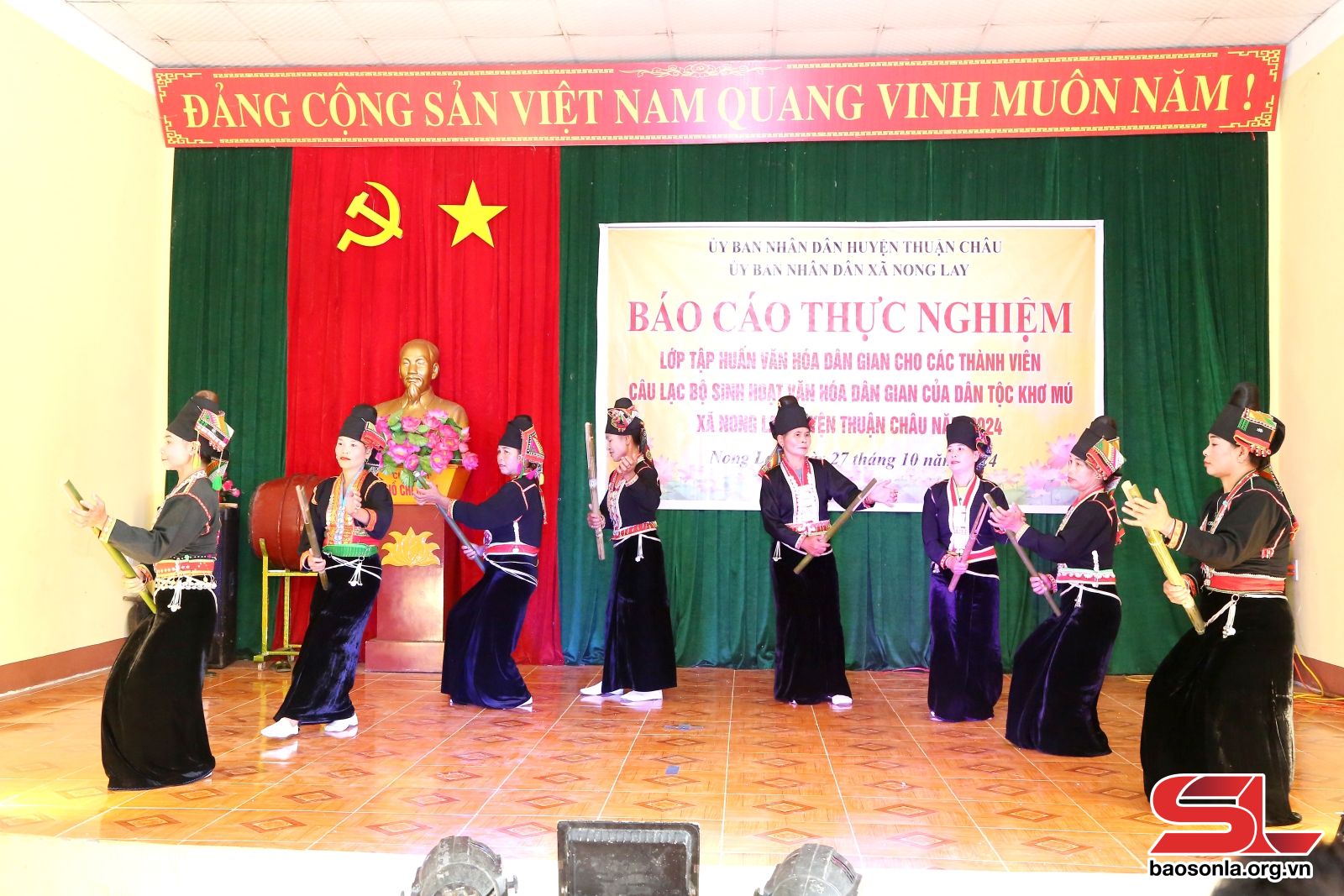
The Kho Mu people proudly wear traditional attire, including the pieu scarf, black com shirt, black skirt, and woven belt. Notably, their method of wearing the pieu differs from that of the Thai women. They expertly style their hair in a bun, adding hairpieces for flair before wrapping the scarf to showcase its intricate patterns. Their com shirts are adorned with large silver rectangular buttons and decorated with coins and colorful beads, symbolizing wealth and prosperity.
Traditional festivals play a vital role in the community's cultural life, with the New Rice Celebration being the largest event celebrated every April. This festival not only marks the beginning of the harvest season but also carries deep spiritual significance.

Lo Van On, a respected elder in Phieng Nong hamlet, said that the New Rice Celebration is held to pray for good weather, bumper harvests, and the well-being of livestock. It features solemn rituals followed by joyous activities such as traditional dances and games like stick pushing, con (cloth ball) throwing, and tug-of-war, fostering community spirit and unity among all villagers.
Implementing the project "Preserving and promoting the beautiful traditional cultural identity of ethnic groups linked with tourism development," the district Division of Culture and Information and the provincial Cultural and Cinema Center have collaborated with the Nong Lay commune People's Committee to conduct training sessions on folk songs, traditional dances like Velr guong and ca luon, and traditional cultural rituals of the Kho Mu.
Additionally, the division has provided financial support to the Kho Mu folk culture club in Nong Lay to purchase costumes, props, and musical instruments to aid the revival of ethnic cultural practices.

Hamlet leaders, respected elders, and folk artisans play a crucial role in passing down traditions to younger generations through clothing, folk songs, food, and festivals. Efforts to raise awareness of cultural preservation among families and clans aim to enrich the Kho Mu community's traditional cultural beauty, thus enhancing the cultural landscape of Vietnam's northwestern region.























You have 500/500 characters left
Please enter 5 or more characters!!!